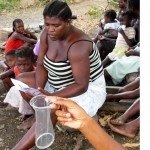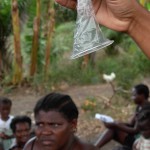This begs the question: what exactly is it?
As my lead suggests, it’s not the first [...]]]>
 This week, as minds here in New York and elsewhere are inevitably drawn back to 9/11 and its aftermath, the U.N. General Assembly (GA) will once again discuss the worldwide promoting a Culture of Peace.
This week, as minds here in New York and elsewhere are inevitably drawn back to 9/11 and its aftermath, the U.N. General Assembly (GA) will once again discuss the worldwide promoting a Culture of Peace.
This begs the question: what exactly is it?
As my lead suggests, it’s not the first time the topic has passed our U.N. news desk.
Spearheaded by UNESCO, United Nations Educational, Scientific and Cultural Organization, 2000 became the U.N. Year for a Culture of Peace. For those who missed it, the GA doubled down on the concept a year later by declaring a Decade of the Culture of Peace (2001-2010) in which it took a stab at involving civil society in creating a global movement for peace culture.
75 million people signed a 2000 Manifesto pledging their support – Meanwhile, a quick survey among my friends revealed that, unfortunately, none knew of it.
“Peace is the absence of war” continues to be an evergreen. But how exactly do you create a culture in which war is absent? What is a Culture of Peace?
In a 1999 resolution and Programme of Action prepared by UNESCO, the GA agreed on eight elements of a Culture of Peace.
Here’s a little overview, drawn from the ’99 resolution and various works of David Adams, former Director of the UNESCO Unit for the Year of a Culture of Peace and an expert on the brain mechanism of aggression.
1. Education for Peace
Since warfare is a learned behaviour, according to Adams, a key component to building a Culture of Peace is a shift from an authoritarian and war-centric educational tradition to a participatory education on values and modes of behaviour that allow youth to resolve disputes non-violently and with respect for human dignity.
This education ought to take place not only in schools, but include informal education taking place through the family and the media, as well as non-governmental and community organizations.
2. Understanding, tolerance and solidarity
The act of “othering” people and designating an enemy is a key component to warfare and detrimental to a Culture of Peace.
Instead, the U.N. and social institutions at all levels ought to foster dialogue and actions that build mutual understanding, tolerance and solidarity.
3. Democratic participation
Hierarchical structures and authoritarianism that are at the centre of warfare ought to be replaced with people’s democratic involvement at all levels of decision-making affecting their lives.
In addition to stronger education on democratic principles, the resolution mentions capacity-building of public officials to strengthen institutions and processes that promote democracy.
4. Free flow of information and knowledge
A strong and free media is essential to documenting and promoting peace culture, while networks are essential social infrastructures.
Propaganda and secrecy, on the other hand, are essential to maintaining public approval for warfare. A free flow of information is thus essential to building a culture of peace in which an informed population is able to exercise its democratic rights to voice disapproval of acts of aggression.
5. Equality of women and men
Male domination is a central part of the culture of war, according to Adams, not because of a genetic disposition to warfare, but because of the age-old initiation of men into war and women’s systematic exclusion from it.
A transformation to a Culture of Peace therefore requires power sharing and the equal participation of women in decision-making.
6. Sustainable human development for all
Building secure livelihoods and the ability to lead healthy productive lives are key to building and maintaining peace.
Debt relief for developing countries, post-conflict reconciliation processes, and a special focus on the needs of women and children in developing strategies are listed as state-based contributions to a Culture of Peace.
7. Disarmament
While this may seem like a no-brainer, disarmament was actually among the last two items to be added to the action agenda, which originally only had six points.
It finally made it in under the header “Actions to promote international peace and security”, with complete disarmament as the top action item.
8. Respect for human rights
Respect for human rights as an essential component of peace culture encompasses many of the above points and should need little explanation.
Among the action items, the U.N. declaration sought the full implementation of the 1993 Vienna Declaration and the development national programmes and institutions to protect human rights.
]]>
Journalist [...]]]>

A Femidom demo. Photo: M. Sayagues/Irin
In a contest for irresponsible tourism, taking the last two female condoms at a Botswana border post as a souvenir would run neck-and-neck with littering the Central Kalahari Game Reserve with soda cans. Hey, spare a thought for a sister: a local woman might need them. I mean the condoms, not the soda cans.
Journalist Bridget Hilton-Barber writes, in the South African weekly Mail & Guardian, about the female condom’s popularity among Batswana women. (Femidoms rub the right way, 14 August). Then she plucked the last ones at the border post, as a souvenir, to lie in her office drawer.
Well, their popularity is a very good reason to leave the condoms in the box for someone who wants to use them.
Correction: Someone who needs to use them.
An average of three out of ten pregnant women at public antenatal clinics in Botswana are HIV-positive. This is an improvement over ten years ago, when four or five out of ten pregnant women were HIV-positive. Condoms helped achieve this drop. (Read about AIDS in Botswana here) Comes with a price
Condoms have a cost and female condoms are the most expensive, even when subsidized by donors. A male condom costs US$0,4; a female condom, US$2.50.

Photo: M. Sayagues/Irin
In March, its sole manufacturer, Female Health Company, announced a cheaper version in synthetic rubber instead of polyurethane that will cost around US$0,60 but is not yet available.
Looks cheap? Remember, many Africans live on less than one dollar a day.
Besides price, supply is a problem. Logistics bottlenecks plague the delivery of goods in Africa, from life-saving antiretrovirals to malaria pills, from sanitary pads to birth control pills, from car spares to school books, from snail mail to email.
There is no difference between a female condom in Botswana, South Africa or Holland, I can assure you. The difference is that a consumer in Holland can buy one or get a free one anytime she wants. In Africa, it ain’t that easy.
So control your grabbing impulse, dear tourist. Have you heard of sustainable fishing and harvesting – or condom plucking? You will be doing a sister a favour by leaving those condoms in the box if you don’t need them.
If you want to see a Femidom, buy one at a drugstore back home.
Responsible tourism is more than eschewing python boots and turtle soup or using the towels at the luxury safari camp more than once.
And tell the tour operator not to allow his Dutch clients to pluck condoms for keepsake either. Would they take the KLM airplane life jackets as souvenirs?
This is SO not rubbing it the right way.
]]>